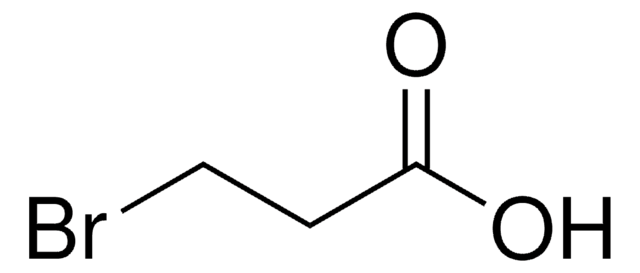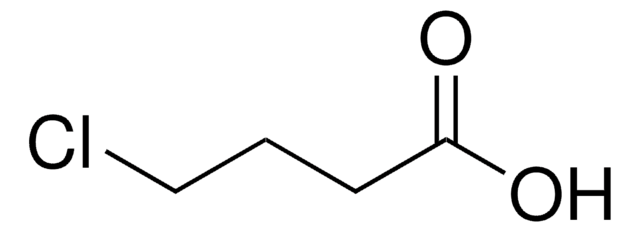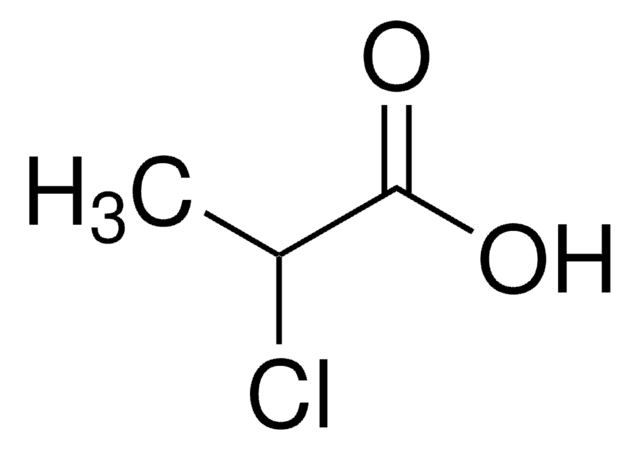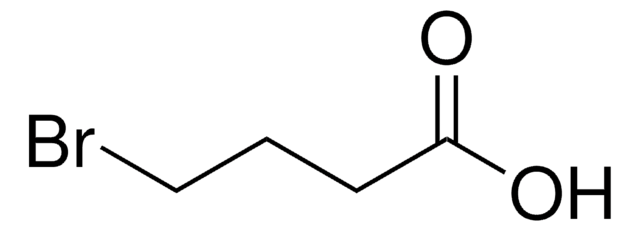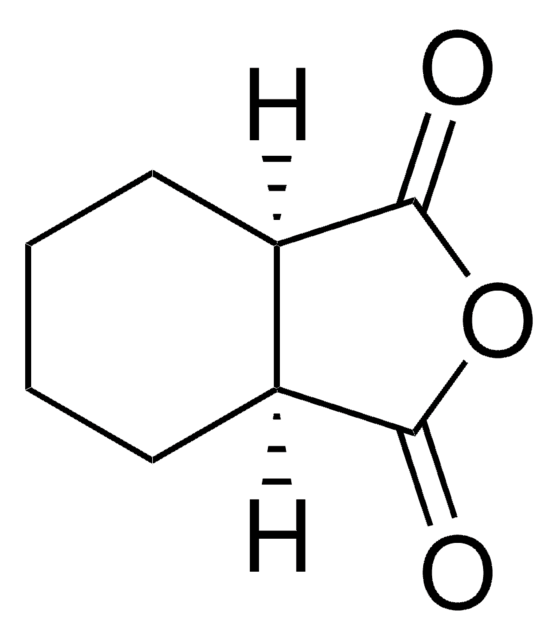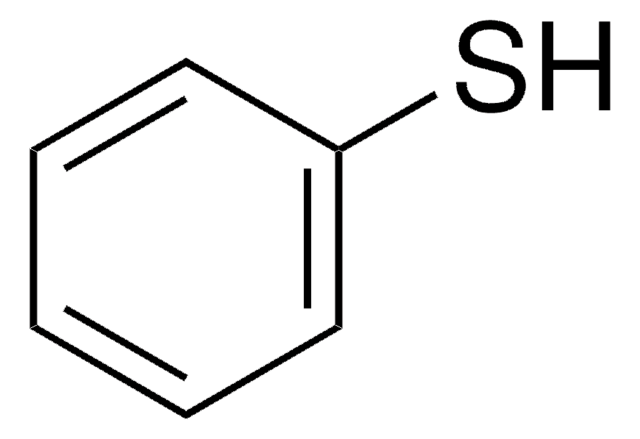About This Item
Fórmula linear:
ClCH2CH2COOH
Número CAS:
Peso molecular:
108.52
Beilstein:
1098495
Número CE:
Número MDL:
Código UNSPSC:
12352100
ID de substância PubChem:
NACRES:
NA.22
Produtos recomendados
Nível de qualidade
Ensaio
98%
Formulário
solid
p.e.
203-205 °C (lit.)
pf
35-40 °C (lit.)
solubilidade
H2O: soluble 50 mg/mL, clear, colorless
grupo funcional
carboxylic acid
chloro
cadeia de caracteres SMILES
OC(=O)CCCl
InChI
1S/C3H5ClO2/c4-2-1-3(5)6/h1-2H2,(H,5,6)
chave InChI
QEYMMOKECZBKAC-UHFFFAOYSA-N
Procurando produtos similares? Visita Guia de comparação de produtos
Descrição geral
3-Chloropropionic acid is used in pesticides.
Aplicação
3-Chloropropionic acid was used to study the degradation of 3-chloropropionic acid by Pseudomonas sp. strain isolated from rice paddy fields. It was also used in determination of 3-bromopropionic acid, biomarker for the exposure to 1-bromopropane in human urine by gas chromatography.
Palavra indicadora
Danger
Frases de perigo
Declarações de precaução
Classificações de perigo
Skin Corr. 1A
Código de classe de armazenamento
8A - Combustible corrosive hazardous materials
Classe de risco de água (WGK)
WGK 1
Ponto de fulgor (°F)
230.0 °F - closed cup
Ponto de fulgor (°C)
110 °C - closed cup
Equipamento de proteção individual
Eyeshields, Faceshields, Gloves, type P3 (EN 143) respirator cartridges
Escolha uma das versões mais recentes:
Já possui este produto?
Encontre a documentação dos produtos que você adquiriu recentemente na biblioteca de documentos.
Degradation of 3-chloropropionic acid (3CP) byPseudomonas sp. B6P isolated from a rice paddy field.
Mesri S, et al.
Annals of Microbiology, 59(3), 447-451 (2009)
Gang Cheng et al.
International journal of nanomedicine, 7, 3991-4006 (2012-08-21)
The reduction-sensitive cationic polymer is a promising nonviral carrier for gene delivery. Until now, disulfide bonds have been the only golden standard for its design. The aim of this research was to develop a novel reduction-responsive cationic polymer as a
S J Armfield et al.
Biodegradation, 6(3), 237-246 (1995-09-01)
Rhodococcus erythropolis Y2 produced two types of dehalogenase: a hydrolytic enzyme, that is an halidohydrolase, which was induced by C3 to C6 1-haloalkane substrates, and at least one oxygenase-type dehalogenase induced by C7 to C16 1-haloalkanes and n-alkanes. The oxygenase-type
Wanwen Chen et al.
International journal of biological macromolecules, 173, 504-512 (2021-01-19)
Synthetic selenium polysaccharides with potential bioactivity have drawn great interest due to the SeO bonds existing in the structure. Herein, N, O-selenized N-(2-carboxyethyl) chitosan (sNCCS) was synthesized through carboxyethylation and selenylation. Various characterizations were performed to identify the structure of
C Rottleb et al.
International journal of cancer, 67(5), 724-729 (1996-09-04)
Terminal differentiation of hematopoietic cells in vivo and in vitro is almost invariably accompanied by down-regulated expression of the c-myc proto-oncogene. Constitutive expression of c-myc in tumor cells inhibits terminal differentiation and maintains proliferation. In Burkitt's lymphoma, chromosomal translocations cause
Nossa equipe de cientistas tem experiência em todas as áreas de pesquisa, incluindo Life Sciences, ciência de materiais, síntese química, cromatografia, química analítica e muitas outras.
Entre em contato com a assistência técnica